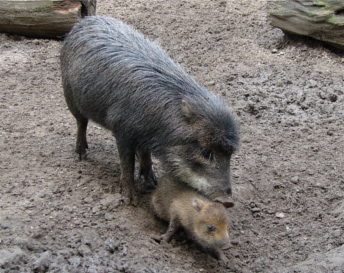- Series:Animals, Transcript English
Genesis 1:25
“And God made the beast of the earth after his kind, and cattle after their kind, and every thing that creepeth upon the earth after his kind: and God saw that it was good.”
 God created animals to reproduce according to their kind. As the Hebrew word for created is bārā, and that for kind is min, creation biologists use the term baramin to describe the entire created kind that God made on days five and six. God made the first animals in each baramin with the genetic ability to adapt, so that over the millennia, these have changed into multiple species, especially after the Flood.
God created animals to reproduce according to their kind. As the Hebrew word for created is bārā, and that for kind is min, creation biologists use the term baramin to describe the entire created kind that God made on days five and six. God made the first animals in each baramin with the genetic ability to adapt, so that over the millennia, these have changed into multiple species, especially after the Flood.
Creation biologists suggest that the baramin is usually equivalent to the evolutionary taxonomic level known as the family. There are, however, some exceptions to this rule.
In the Americas, there is a family of animals known as peccaries. These look very similar to Old World pigs. The confusion is exacerbated by pigs having been imported to the Americas by European settlers, and then having become feral.
Evolutionists emphasize that peccaries and pigs are two different families, although they think they must have had a common ancestor within the suborder known as suina. It is true that there are some morphological differences between the two families, and no hybrids have so far been discovered between pigs and peccaries. Yet, peccaries look unmistakably like pigs. Both have a two-chambered stomach – though this is more complex in peccaries. Also, both families have a duplicated gene which is not found in any other mammals. For these reasons and more, creation biologists are surely correct in considering the whole suborder to be one baramin, created by God on Day Six. Author: Paul F. Taylor
Prayer: Thank You, Father, for the wide variety of animals that You made that demonstrate Your goodness and creativity. Amen.
Ref: Lightner, J.K. Mammalian Ark Kinds, Answers Research Journal 5 (2012):151–204. www.answersingenesis.org/arj/v5/mammalian-ark-kinds.pdf. Image: White-lipped Peccary, photo by Chrumps, CC BY-SA 3.0 unported.
